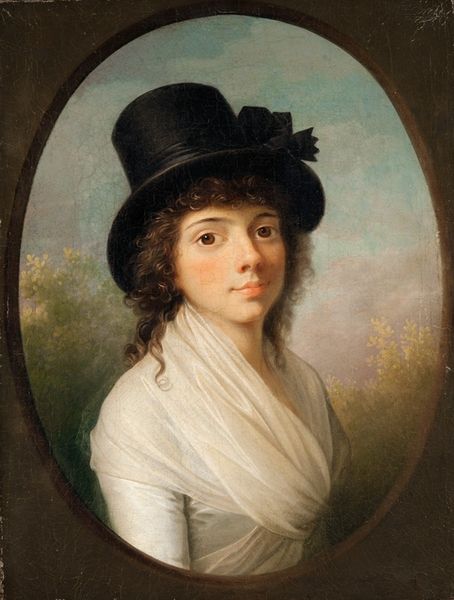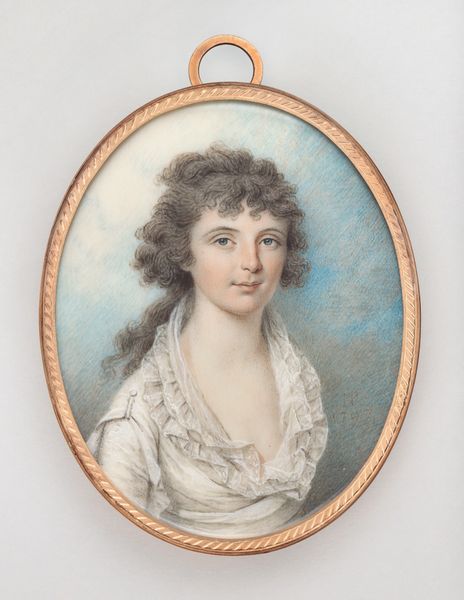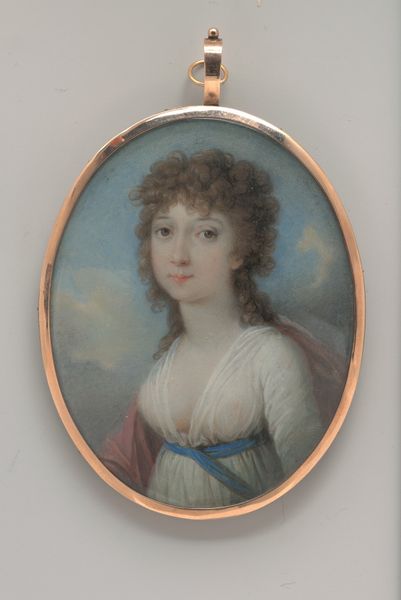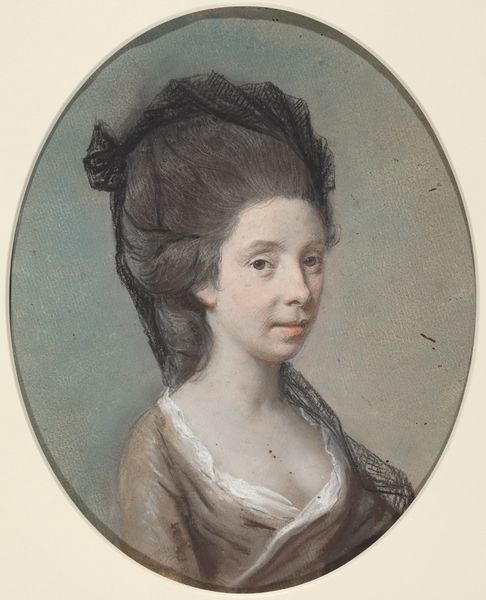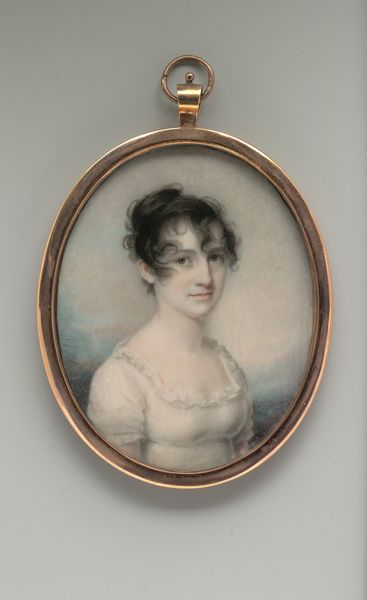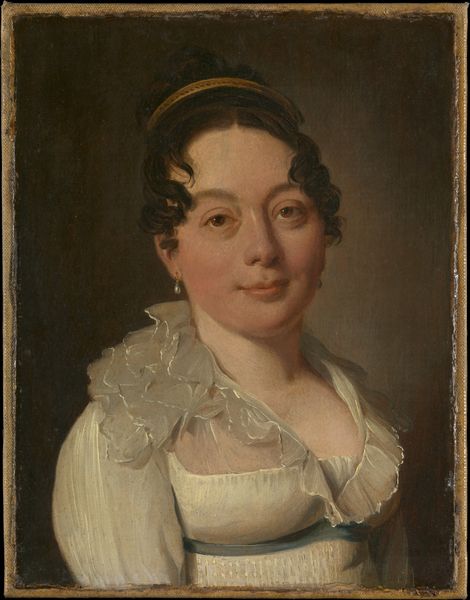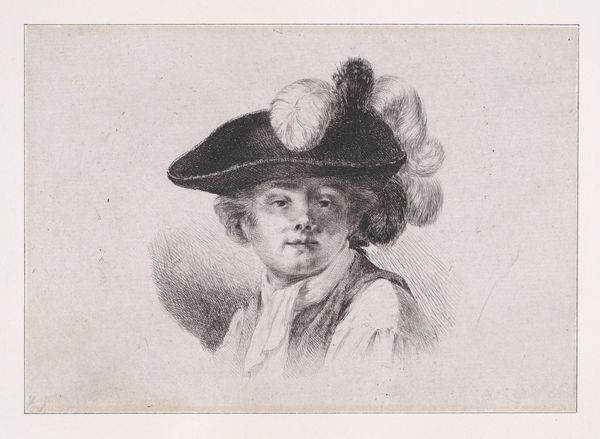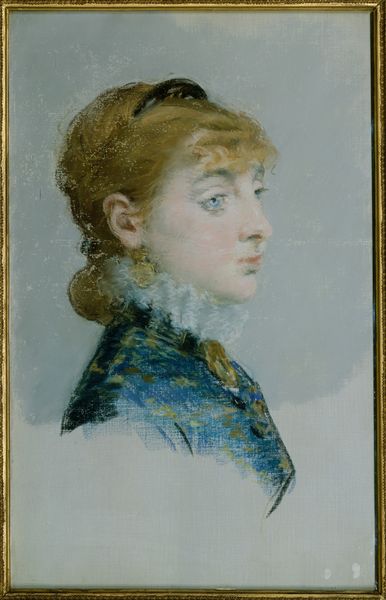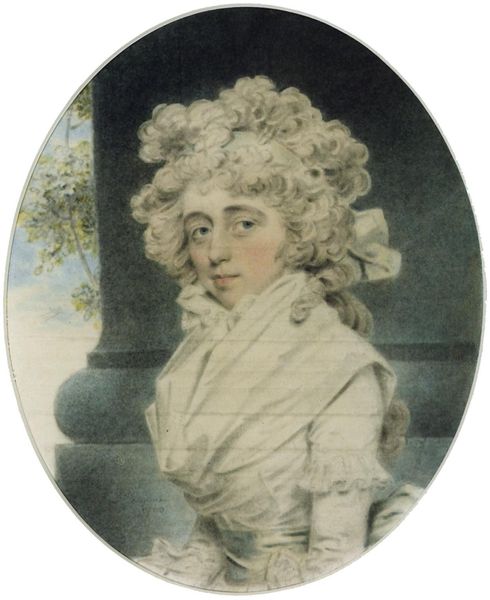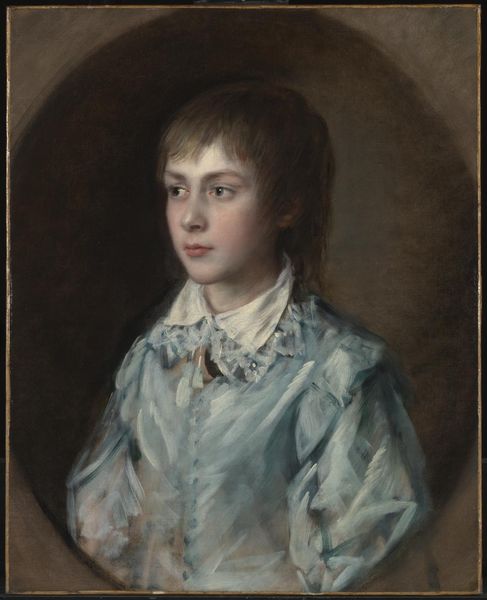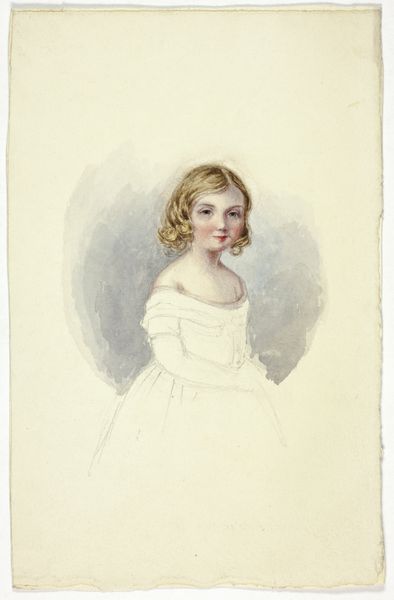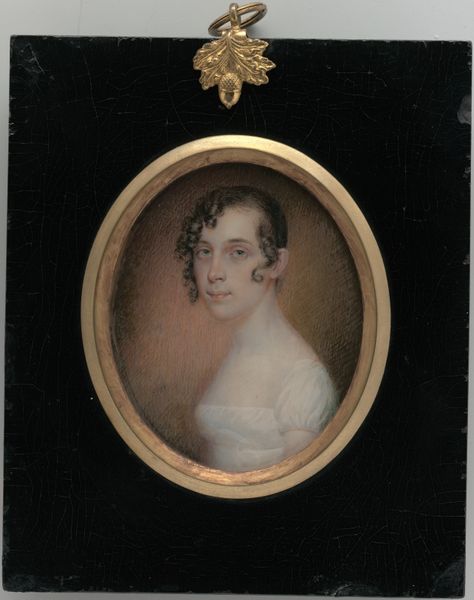
drawing, pastel
#
portrait
#
drawing
#
romanticism
#
genre-painting
#
pastel
#
portrait art
Dimensions: sheet: 13 3/8 x 10 1/4 in. (34 x 26 cm)
Copyright: Public Domain
Editor: So this is Jens Juel’s "Portrait of Petronella Cornelia Rømeling" from 1792. It's a pastel drawing, which is quite striking. I'm really drawn to her confident gaze and the unusual choice of a top hat. How do you read this piece, especially considering the time it was made? Curator: That top hat is indeed intriguing. Pastel portraits like this were fashionable amongst the bourgeoisie of the late 18th century, and it is worth asking how this image operated within its socio-political context. The direct gaze and the almost assertive posture, coupled with the somewhat masculine hat, move beyond the conventional depiction of women in portraiture at that time. Editor: So it's making a statement about societal roles? Curator: Precisely. While the soft pastel medium aligns with popular notions of feminine delicacy, the hat disrupts this. The French Revolution was underway. Fashion choices often reflected sympathies and shifting power structures. Can we interpret Petronella's hat, an article typically worn by men, as an expression of revolutionary ideas about gender roles? It's a speculative argument, of course, but an art historian seeks such contextual clues. Editor: That makes so much sense. It’s not just a pretty picture, it's loaded with potential meaning about Petronella’s position. Did female portraitists do similar work? Curator: Yes, some did, and studying those artworks within a similar social frame will give you deeper knowledge. A contemporary artist like Élisabeth Vigée Le Brun often made propagandistic portraits of the elite. A comparison would likely be enlightening! Editor: I'll definitely look into that. It's amazing how one portrait can open up so many historical questions! Curator: Indeed. It is crucial to realize the role images have played and continue to play within shifting cultural landscapes. We must not underestimate how artists were then and are now sensitive to the politics of imagery.
Comments
No comments
Be the first to comment and join the conversation on the ultimate creative platform.
